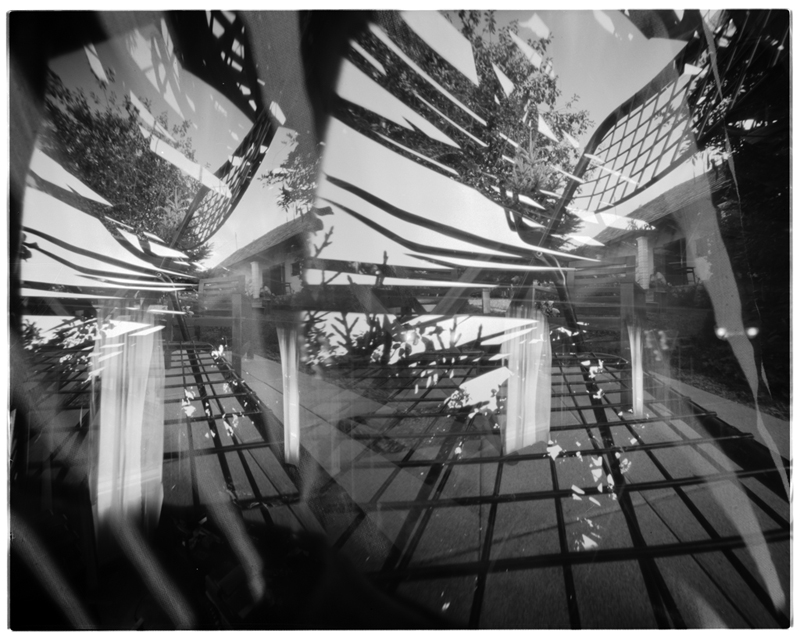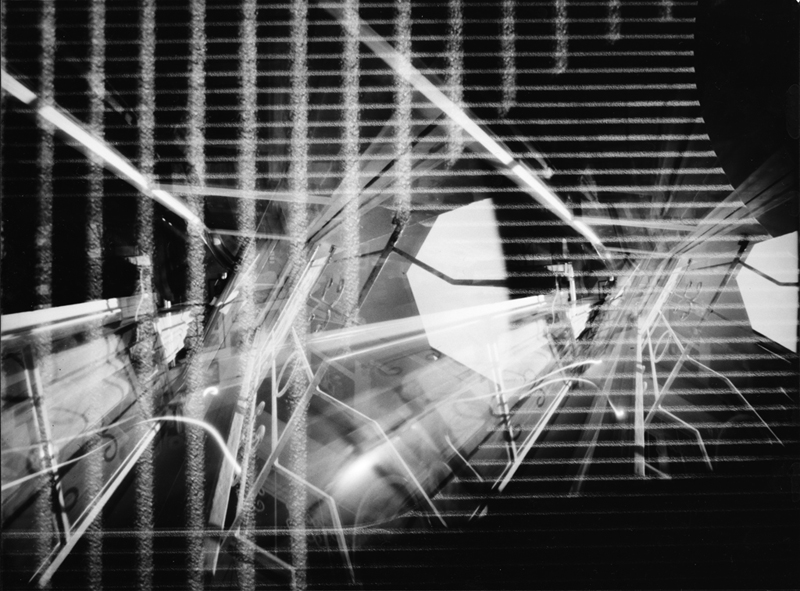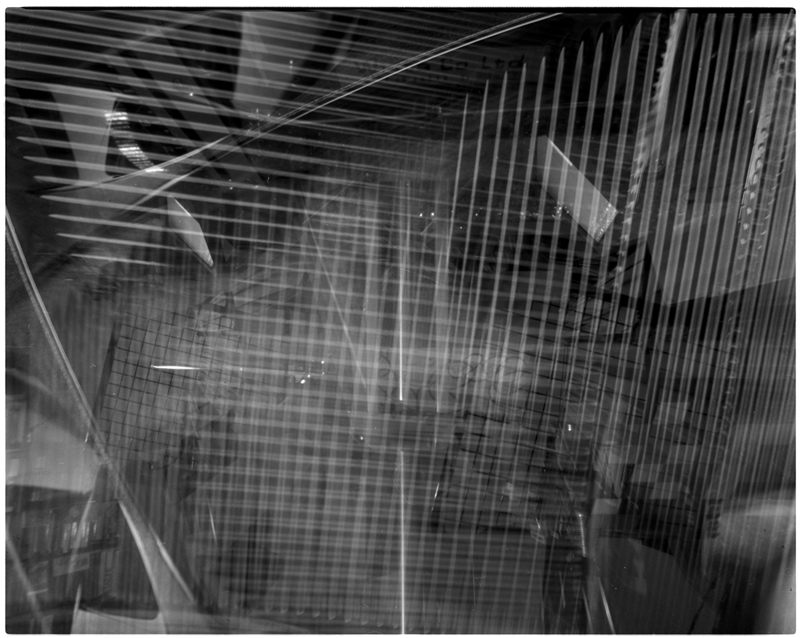|
Zoltán Szegedy-Maszák What does Photographing Mean? series of silver gelatine experimental photographs, 2010 |
|
To understand the broader context of these works, please see my essay "Works Concerning Images of Light".
|
|
My experimental photo series “What does Photographing Mean?” address the fundamental differences between the (analog) photochemical and the (digital) electronic imaging technologies. In the series from 2010 all the pictures were made using traditional silver-gelatin processes. The images were built from multiple exposures: the individual shots at certain areas of the photographic emulsion overexposed and wiped out each other, while other parts of the final image were the results of different images amplifying each other. Each of the individual shots were intentionally underexposed, so that only the sum of the four-five exposures could be developed altogether. |
 WHAT DOES PHOTOGRAPHING MEAN? photograph from the series, silver gelatine print, 50.8x62cm, 2010 |
|
Taken the advantage of the memory of photochemical processes I (under)exposed several images hours or days later to the same film material. Using various devices from simple pinhole cameras to large format technical cameras the times of exposures varied from fragments of a second to several hours. The resulting images are quite special; similar images can only theoretically be produced using digital devices and software tools. Simulating this visual appearance would mean painting the image nearly pixel by pixel. However the Pencil of Nature can draw these images easily on silver-gelatin canvases.
|
|
It is impossible to develop multi-exposure images of light using electronic imaging devices in a similar way. Multiple exposure can only be simulated by digital devices with the help of software tools. All the electronic imaging devices are designed to be able to reset themselves as soon as possible after the exposure; once an image is captured, the image data is immediately read and cleared out from the photosensitive device (and rapidly copied to memory chips), in order to make the device ready for the next shot. This is a fundamental limitation of the different technological approaches. |
 WHAT DOES PHOTOGRAPHING MEAN? photograph from the series, silver gelatine print, 50.8x62cm, 2010 |
|
For example in a traditional 35mm analog camera after shooting an image, you fire the machine to the next shot by advancing the film to the next frame - your already taken images reside in the sequence of frames deep in the camera body waiting to be developed later. There is no need of immediate archiving or processing: you can develop your films even years after the exposure. In an electronic camera you don’t have a long stripe of photosensitive material to be advanced to the next frame. There is one single photosensitive surface, the CCD/CMOS etc. device which serves as a single canvas to render the images of light onto. Thus it is fundamental to be able to forget the previous image as soon as possible to be able to capture the next image in advance. Consider the videocameras which are obliged to capture at least 25/30 frames per second (special high speed cameras operate on several thousands of frames per second): their sensors have to present tabula rasa for the next image to be recorded at least at this frame-rate. Electronic imaging devices are designed with the aim of rapidly forgetting images, while their predecessors, the photochemical emulsions are developed to remember as long as possible - it sounds bombastic, but hardly questionable. |
 WHAT DOES PHOTOGRAPHING MEAN? photograph from the series, silver gelatine print, 50.8x62cm, 2010 |